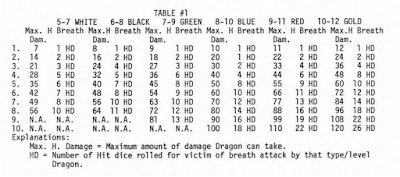Dave Arneson included a brief section in JG 37 "The First Fantasy Campaign" outlining how magic worked in the original Blackmoor campaign, an approach differing in many respects from the Vancian "fire and forget" system used in OD&D.
A magic-user blasts a section of a castle wall using a lightning bolt. Illustration by Ken Simpson, based on the original by Dave Arneson.
The first magic-user spells were probably drawn from those listed in the 1st edition of Chainmail (phantasmal forces, darkness, wizard light, detection, concealment, and conjuration of an elemental), in addition to fireball and lightning bolt, depicted above.
The latter two were also used in David Megarry's Dungeon! board game, in addition to "transference", (a spell inspired by Star Trek's transporters, the origin of "teleport"). Megarry leveraged the Blackmoor mechanic for casting spells, using cards.
Arneson later described "A system of magic based on ANIMAL-Type, VEGETABLE-Type, or MINERAL-Type with a hodge-podge of spells." in discussing the original Blackmoor campaign in Different Worlds #3 (June/July 1979).
In Blackmoor, magic followed the "Formula" pattern for most magic. The reasoning behind limiting the number of spells that a Magic User could take down into the Dungeon was simply that many of the ingredients had to be prepared ahead of time, and of course, once used were then powerless. Special adventures could then be organized by the parties to gain some special ingredients that could only be found in some dangerous place.
Dave Arneson, The First Fantasy Campaign
Spell preparation or "manufacture" is mentioned in the character profiles for the Egg of Coot, the Ran of Ah Fooh, and the Gin of Salik, and echoed in the Holmes rules for scroll creation, as discussed here. The concept of adventuring for special components also emerged in AD&D.
Progression reflected the increasing ability of the Magic User to mix spells of greater and greater complexity. Study and practice were the main important factors involved. A Magic User did not progress unless he used Spells, either in the Dungeon or in practice (there was no difference) sessions. Since there was always the chance of failure in spells (unless they were practiced) and materials for some spells were limited (determined simply by a die roll) the Magic User did not just go around practicing all the time. The Magic User could practice low level spells all the time, cheaply and safely, but his Constitution determined how often he could practice without rest. Thus, the adventurers might want a Magic User to come with them only to find him lying exhausted.
Dave Arneson, The First Fantasy Campaign
Update (Dec 3, 2020): The role of Constitution in determining how often spells could be practiced suggests that Arneson may have been at least partly influenced by the concept of "endurance points" in Midgard (see Spellcasting before D&D in Midgard over at Playing at the World).
The method by which magic-users gained experience in Blackmoor was further developed in Arneson & Snider's "Adventure in Fantasy" (1979). Daniel Boggs has examined
Spell Failure in Blackmoor in depth. Note the role of constitution in a magic-user's advancement.
So to progress to a new level, one first learned the spells, and then got to use that spell. There was no automatic progression, rather it was a slow step by step, spell by spell progression.
Dave Arneson, The First Fantasy Campaign
For more on the original Blackmoor magic system, with comments from some of the original players, see threads on The Other Magic System for D&D and Blackmoor Wizard's Duel over at OD&D Discussion.





















